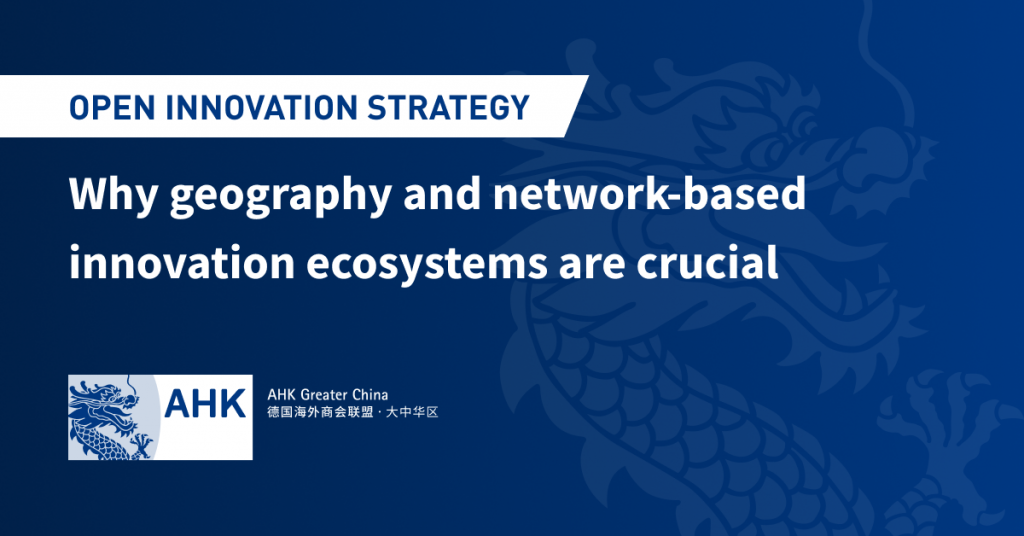
Back in 2015, John Chambers, Executive Chairman of Cisco, said: “At least 40% of all businesses will die in the next 10 years… if they don’t figure out how to change their entire company to accommodate new technologies.”
Out With the Old, in With the Tech
A recent study from McKinsey shows that over 80% of business executives believe that their current business models are at risk. It also mentioned that 84% think that innovation is crucial for their growth strategy. Yet only 6% of executives are satisfied with their innovation performance.
The drastic changes in technology adoption and innovation do not just eat the market share of mid-sized companies — they also knock heavily on the doors of giants. Over the next decade, over half of the companies listed on the S&P 500 list will be replaced by new entrants. This means that some of today’s biggest brands will be replaced within a decade. Hard to imagine, right?
New technologies and players are entering traditional industries and disrupting the status quo. Fast-growing companies in the form of startups enter the market and shorten the life expectancy of their larger counterparts. These startup companies often come from unexpected backgrounds, surprising corporates in automotive, finance, energy, healthcare, and other industries.
However, most companies in the Fortune 1000 list have established an open innovation concept in order to stay informed about possibilities. Over 80 percent of the corporate executives are interested in knowing more about startups and exploring collaboration models or partnerships.
Intrapreneurship: Innovation Within Corporates
The above-mentioned dynamics should be enough encouragement for large corporates to innovate. However, let us look into the various reasons corporates should spend money on innovation.
(1) First, and most importantly, corporates need to stay competitive in order to remain in their position of power, secure jobs, and please shareholders.
(2) Innovation is increasingly becoming a magnet for talent. If you try to hire the best AI engineers, but you cannot outcompete brand names like Tesla or Tencent, your company will have a hard time staying attractive for talents.
(3) Often companies dedicate a clear annual budget for innovation, without having a clear way to measure the impact. VPs are burning money solely because they have to spend it. If spending goes down, they will receive less in the coming years. This top-down approach is most common in corporate structures where executives are too fixated on their existing product or their solution to a problem that may not exist anymore.
(4) And finally, to solve real-world problems. Identifying people, companies, governments, or other stakeholders who have pressing issues and are willing to pay for a new solution. A good example of that is Ford: Back in the day, Henry Ford said: “If I had asked people what they wanted, they would have said faster horses.” Given the technology standard at that time, it was innovative to build a car to solve the problem of getting from A to B. Today, people still have the same problem, but instead of building a car, they provide a marketplace where you get a ride as a service, like Didi or Uber.
(5) Innovation can be problem-based, or solution-based. Startups or new entrants like Didi are able to capture massive market share or create new markets because they solve an existing problem in a new and more convenient way. Successful startups most often focus on problem-based innovation. Corporates, as mentioned earlier, are usually focused on solution-based innovation. They had done their part of innovation when they were young and growing. Now they are living from the margins of being a premium player in a traditional industry, having the best solution in the market. They feel secure because it took decades to develop highly complex processes to develop these solutions.
Inside Vs. Outside Innovation
Innovation can be divided into two parts: inside innovation and outside innovation. Inside innovation is mostly focused on R&D expenditure. This is where your company majorly creates IP, processes, and new products. If you are more advanced and open, your organization also has established intrapreneurship programs, like Intel or Ericsson, where employees can develop new products or solutions using company resources, and sometimes even start new business lines or companies.
Outside innovation – or open innovation – refers to partnerships, hackathons, prototyping, or investment. Partnerships can be with other companies in or adjacent to your own industry. Hackathons or Ideathons are short-term challenges where external teams or developers come together to create solutions for pre-defined problems. Prototyping or development of proof of concepts (POCs) is a common strategy to collaborate with startups. Investment can be a strategic or minority investment into emerging players who can become opportunities or threads in the future.
The Role of Geography and Networks in Innovation Programs
Nearly every Fortune 500 company has developed its own open innovation program, some more successfully than others. The efficiency of these programs depends heavily on the scope and reach of geography and network innovation ecosystems. A geography innovation ecosystem refers to where you are based, and where you look. Network innovation ecosystems are who you know and who you work with.
If you focus too much on where you are located and only look at innovation partners near you, your innovation capacity is limited. This could mean that your HQ is in Berlin, so you look for startups in the city. However, the best startups and innovators are not necessarily based in Berlin, or even Germany. The same goes for your network — if you only focus on the ‘right people’ you know locally, you limit the pool of potential stakeholders and partners significantly.
A problem-based approach toward innovation requires you to have a maximum reach, both in terms of geography and network innovation ecosystems. However, the bottleneck of this approach is trust. Trust is not scalable unless you create a system that helps you generate trust with more people. So how can you optimize your geographical innovation ecosystem?
Expanding one’s network innovation ecosystem is tricky. You need to know the right people to solve a problem and extend your network of trust. You can accomplish a more efficient open innovation strategy by optimizing your team:
First, you need to have clarity: clarity on what you want to innovate, what you wish to solve, resources you have to offer, people involved, and expected outcome. Second, you need to create a diverse culture. This means forming a team consisting of different nationalities, languages, and cultural backgrounds to positively affect decision-making. The culture needs to be open to trial and error and innovating without internal politics. The Mckinsey study mentioned above also showed that over 50 percent of corporate innovation leaders face the challenge of encouraging an internal culture of experimentation and innovation.
Third, your open innovation team needs to have capacity. That means freeing them of other tasks and allowing them to focus on achieving the goals of the open innovation strategy. Too often, these departments are utilized for marketing and PR purposes, wasting away the innovation potential.
Finally, the team needs to have the right capabilities. This one is not simple, as it requires finding professionals with an entrepreneurial mindset who feel comfortable in a corporate environment. Without the leadership and vision of a capable team, your open innovation strategy will not bear any fruits. When the team is unclear of its mission, the culture is closed and with limited capacity, and the team lacks capability, the output of the open innovation team will most likely lead to market research only.
A positive example of a successful open innovation strategy is Walmart and the Food Security Innovation Pipeline. Walmart collaborates with other large corporates and thought leaders in the supply chain, agriculture, and FoodTech to solve problems in their industries. Together they source globally for startups to partner with and build POCs. The team fulfills the four aspects of clarity, culture, capacity, and capabilities. Their geography innovation ecosystem is not limited to the US and China — where their headquarters are located — and they have a well-established system to welcome startup recommendations. The optimization of geography and network has enabled them to forge successful innovation partnerships and create multiple prototypes.
To conclude, innovation is crucial for corporates, and open innovation is an art that requires the right prerequisite in order to function. To foster innovation within the organization, companies should start with a problem — a clear problem provides purpose and direction and helps drive the team to success. Companies should optimize their team for clarity, culture, capacity, and capabilities; Choose open innovation as a strategy to complement internal R&D efforts; Innovate without borders and maximize their innovation ecosystem; Be open to everyone, extend their circle of trust, and enable a larger network innovation ecosystem. If your company can achieve this, it will stay competitive and attractive for future talents.
Jelte A. Wingender is the CEO and Co-founder of Founders Lair, a marketplace that accelerates the world’s transformation to a decentralized and digital innovation ecosystem. Before becoming a founder of a technology startup in China, Jelte has advised Fortune 500 companies on their open innovation strategies and startup collaborations.
